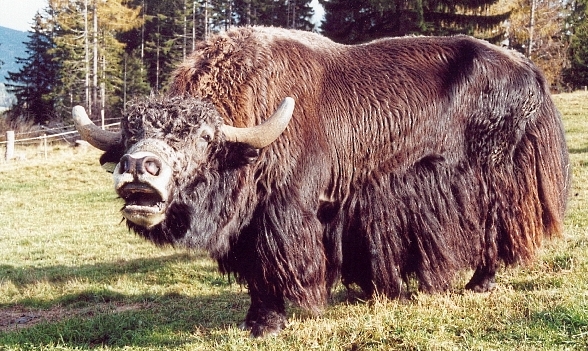Nutrition

The yak is an herbivore and thrives on a very small diet.
There may not be many organisms competing for the same food source that the
yaks diet on, there is the
environmental
factor that limits the food options for a yak diet. This diet mainly consists of mosses, lichens, herbs, grasses,
and sometimes wild flowers. A wild flower that could be eaten by
yaks is one even in the U.S., the
dandelion or similar common flowers. This diet often is based on the
season and the location of the yaks. Flowers and grasses are
much more prominent during the summer months and mosses and
lichens are the more common food of choice in the winter.
The yak spends a lot of its time grazing for food. The yak does
not need to spend a lot of energy to gather its food, however as
you read on the adaptation page,
the nutrient quality of the food that the yak eats is very low.
The yak must have special adaptations in its digestive tract to
efficiently collect all the nutrients from the food the yak
eats. This contrasts with the diet of carnivores. As predators,
carnivores must expend a lot of energy to get their food, but
when they do get it, it is very high in nutrients.
The lichen, one of the few organisms consumed by the yak, is actually interesting itself. Lichen is a combination of organisms partaking in a symbiotic relationship. This means that each organisms gives something beneficial, such as food or protection, to the other. A basic trade of needs. Lichen is a symbiotic relationship between a fungus and either a cyanobacteria or a green alga.
